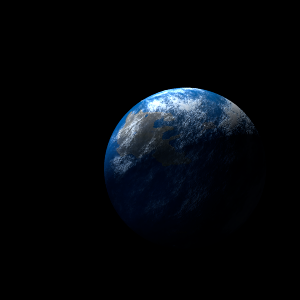|
|
Space Astro
|
Info for exoplanet "Epimaka"
| Scientific (actual) data |
|---|
| Planet | HIP 3206 b |
| Planet status | Confirmed |
| Mass sini | 0.173 |
| Orbital period | 1211 |
| Semi major axis | 2.108 |
| Orbit eccentricity | 0.298 |
| Discovered | 2021 |
| Updated | 2021-05-27 |
| Omega | 297 |
| Tconj | 2455610 |
| Publication | Published in a refereed paper |
| Detection type | Radial Velocity |
| Mass detection type | Radial Velocity |
| Alternate names | HD 3765 b |
| Star name | HIP 3206 |
| Right ascension | 147.2° |
| Declination | 40.19° |
| Star distance | 17.9352 |
| Star mass | 0.84 |
| Star sp type | K2V |
| Star alternate names | HD 3765 |
| Wikipedia article | HIP 3206 b |
Back
| |
| Fictional info (?) |
|---|
| Suggested name | Epimaka |
| Planet type | Cold planet |
| The interior of Epimaka is mainly composed of ices and rock. It is named after the deity Epimaka, the creator of fear.
Epimaka is gravitationally locked with HIP 3206 in a 3:2 spin-orbit resonance, and rotates in a way that is unique in its solar system.
Epimaka is primarily composed of molecular hydrogen with a significant part of its mass being ozone, though ozone comprises only about a limited fraction of the number of molecules.
Epimaka has been explored on several occasions by robotic spacecraft, most notably during the early Pioneer and Wayfinder flyby missions and later by the Hawking orbiter.
Wind speeds can reach 113 metres per second. |
| Atmosphere | Molecular hydrogen | 48% |
| Ozone | 38% |
| Neon | 8.3% |
| Helium | 4.1% |
| Hydrogen chloride | 0.62% |
| Carbon monoxide | 0.00041% |
| Methane | 5.2E-5% |
| Atmospheric pressure | 0.22 bar |
 |
| No known satellites |
| Google search for Epimaka |
|
Website by Joachim Michaelis
|
|
|
|